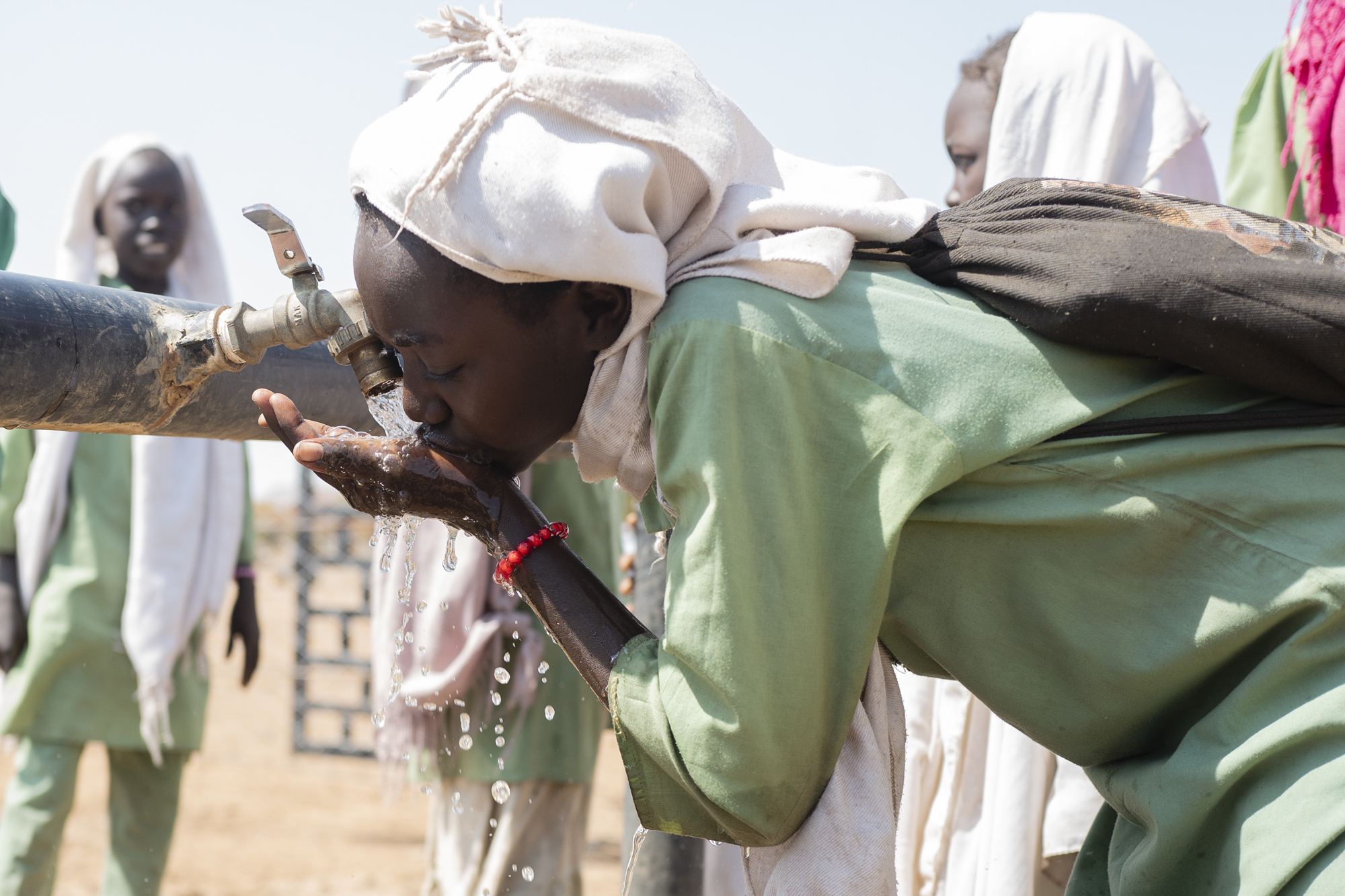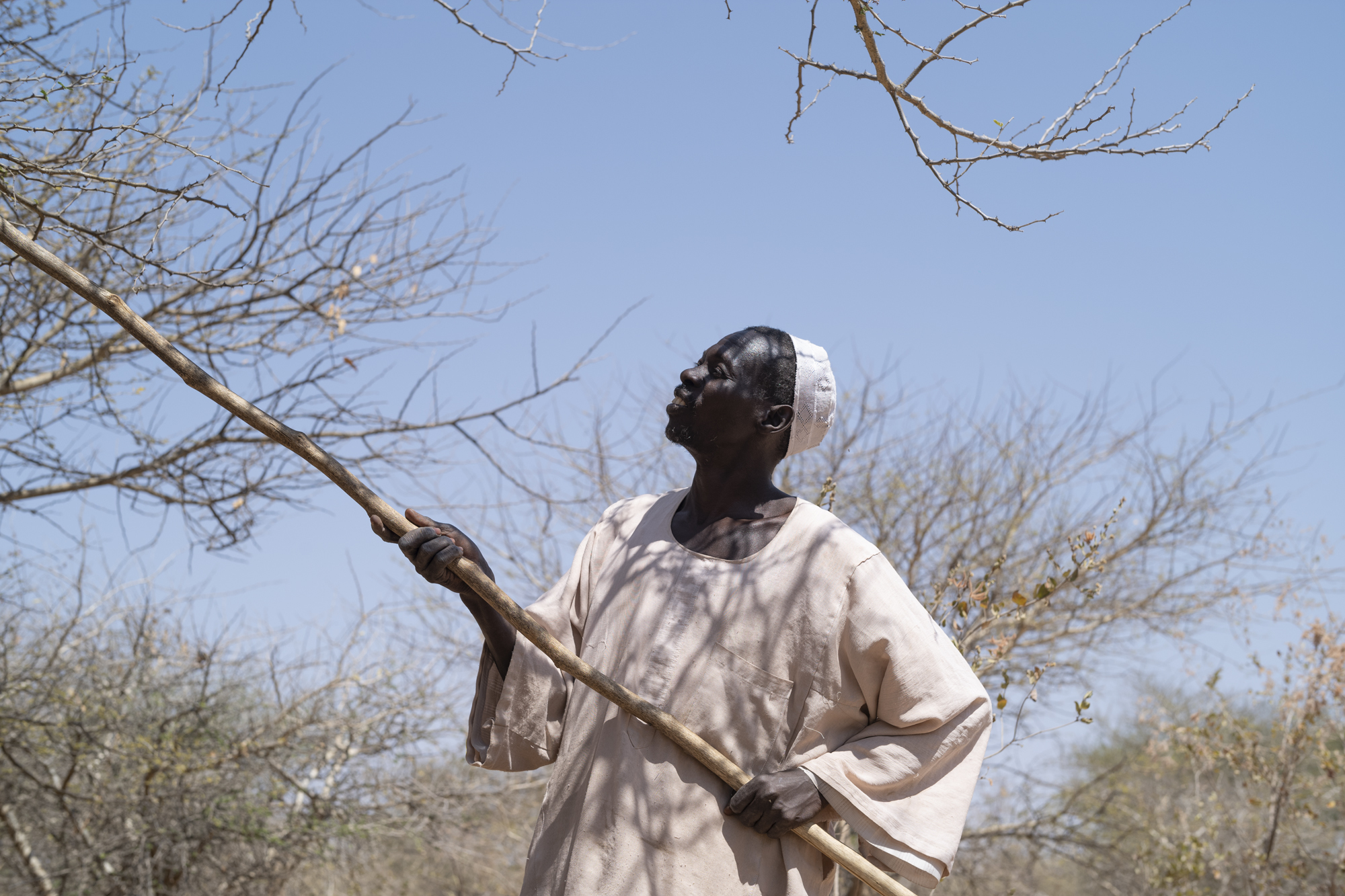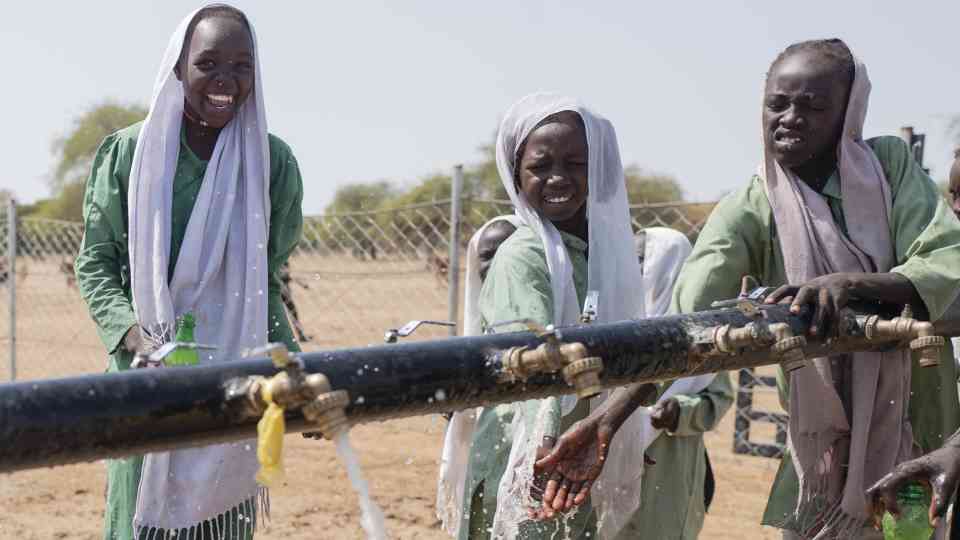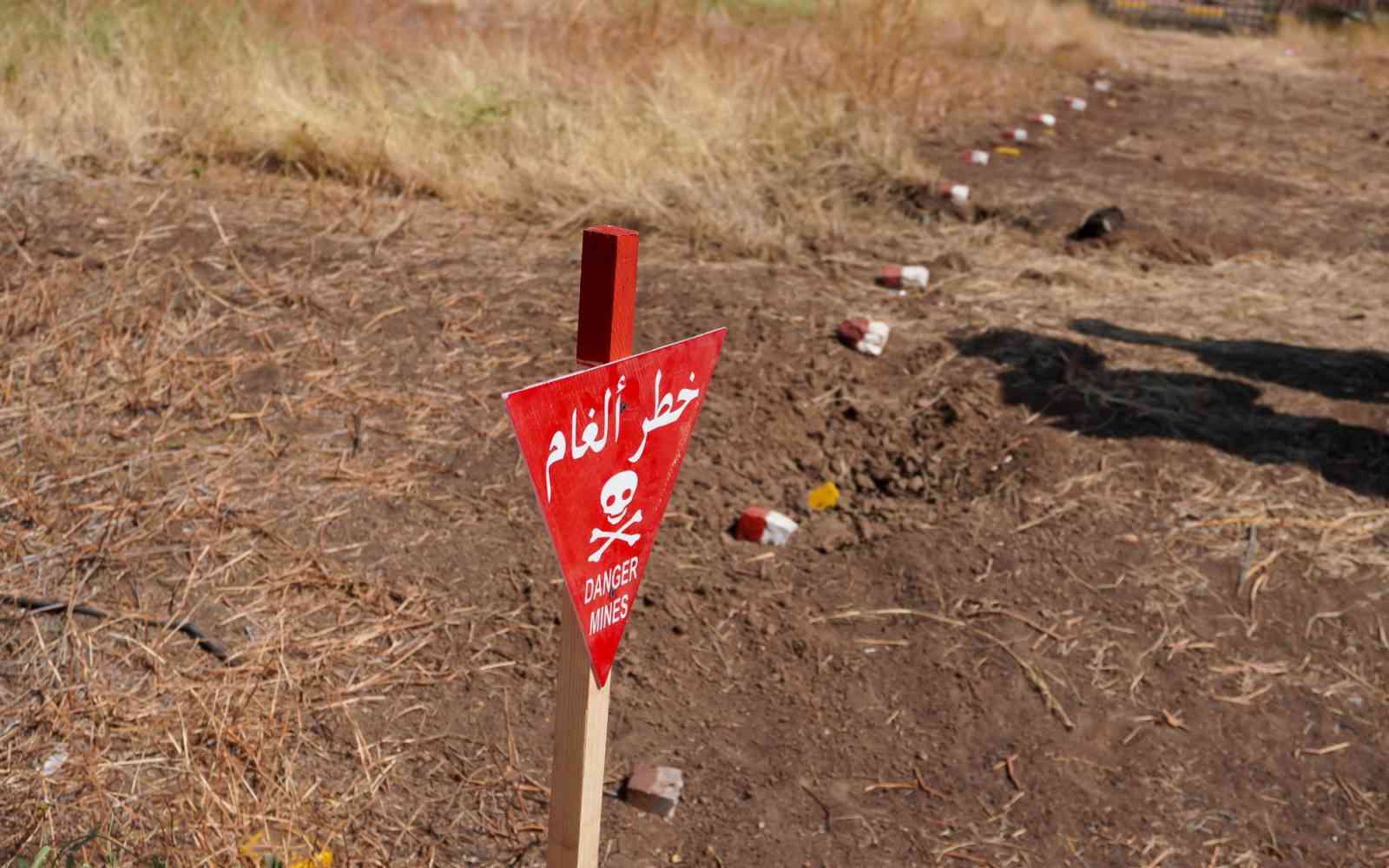The United Nations Office for Project Services (UNOPS)
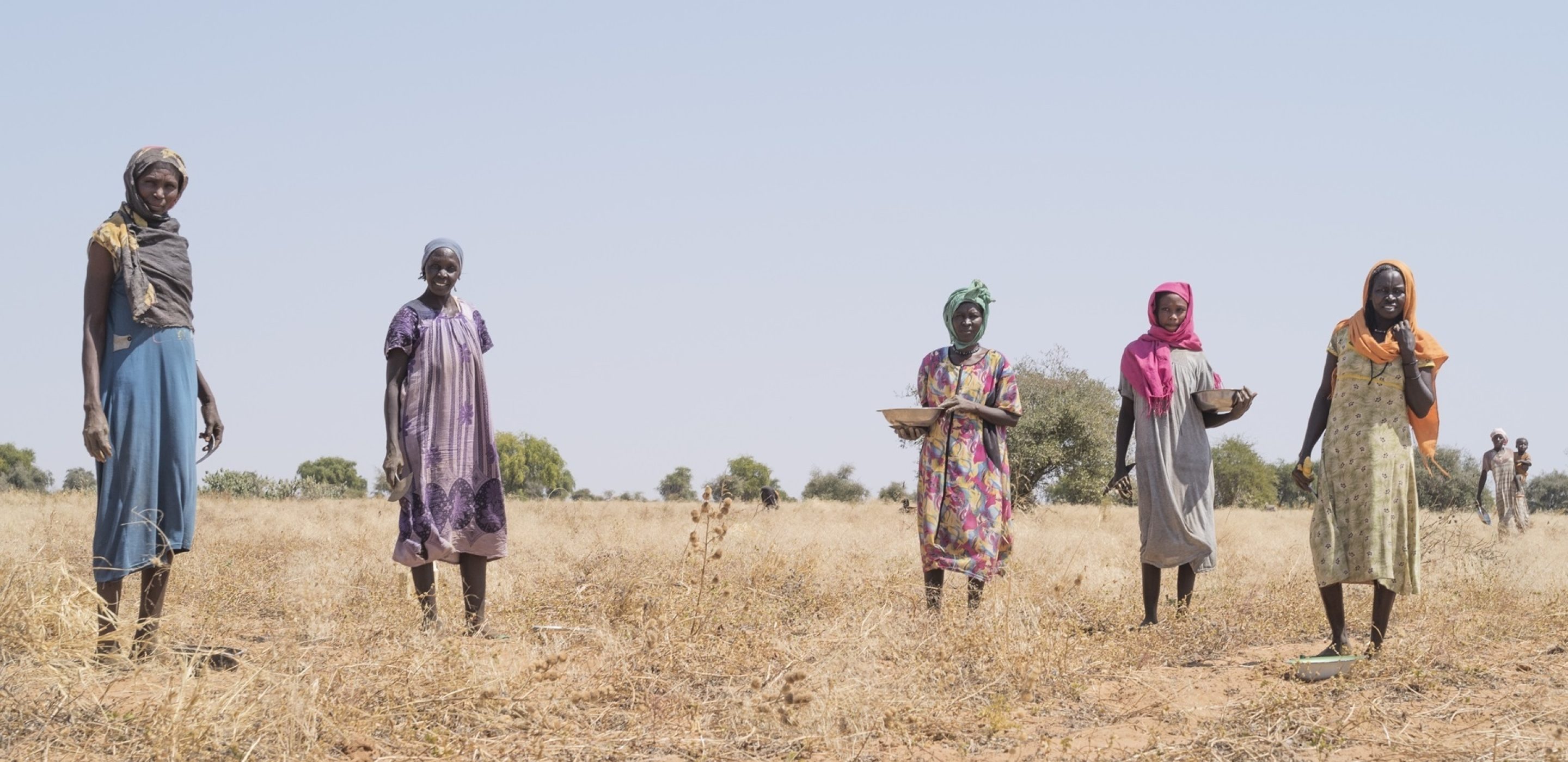
Helping peace take root
Across East Darfur, shared management of natural resources is helping mitigate conflict, promote women’s rights and improve livelihoods.
Some 2 million people and 20 million livestock inhabit the semi-arid plains of East Darfur. Its sandy soils, known locally as qoz, offer a fertile environment for agriculture.
Like many parts of western Sudan, however, unstable climate conditions have always presented challenges for the communities who live in the area. With a rising population and more frequent climatic variability, competition over water, land and forests has only increased. Combined with ineffective governance and policies, the unsustainable use of natural resources has had severe social and environmental consequences.
These challenges have been exacerbated by a major armed conflict in Darfur that began in 2003, which has tragically led to an unknown number of deaths, as well as mass displacement, rapid urbanisation and the destruction of social systems and infrastructure across the region.
We are being threatened by desertification in some areas right now. We used to have several green belts that protected us from high winds. Now the tree belts are declining because of over felling.

A new vision
Sayeda promotes a new vision for the way natural resources are handled in East Darfur.
She believes that fostering peace and improving livelihoods in the region is a process that requires everyone to be actively involved in decision-making processes. Encouraging more women to engage – at both the local level and beyond – is an important step in her district’s development – helping to promote gender equality and the vital role women can play within these communities.
“The way men treat women as inferior in East Darfur [...] you don’t really see equality. Only through patience, perseverance and facing difficulties head on are women reaching administrative positions,” says Sayeda.


According to Sayeda, in a number of communities across East Darfur, things are slowly starting to change, with women playing a greater role in various decision-making processes.
Through a project that is combining awareness raising initiatives and training on how to better use natural resources, Sayeda says people are also beginning to talk more about the importance of the environment and the benefits of using natural resources more effectively.
“It is starting to show positive results. There is more green cover now in some of the areas we are working in,” she says.
In the Arafat locality, Salwa Adam Abdalla is part of a 20-person committee, comprising eight women and 12 men in charge of managing the community’s resources. Salwa is responsible for overseeing the community’s savings from livelihood activities such as farming and livestock breeding. Each member of the community contributes a portion of their income from these activities, which is then saved in a locked box, known locally as a sandouk, and is only opened when all committee members are present.
“The idea of the sandouk is to help us save money for our children’s school fees or for treatment when someone is sick,” explains Salwa.

Promoting peace
Conflicts in East Darfur often occur between livestock herders and farmers, who together make up around 80 per cent of the population. Every year, during the dry season, nomadic herders travel north in search of fresh grazing pastures. Increased competition over available resources as well as animals straying onto cultivated land can cause tensions between the herders and settled communities.
In the past, tensions and conflicts arising over land and resources were often solved via traditional conflict mechanisms, but due to the increasing imbalance in the relationship between people and the local environment, coupled with the fact that many people remain armed due to the ongoing conflict, the dynamic has changed. Other methods of conflict resolution and prevention in relation to shared resources must be sought.
One of these approaches is to demarcate the traditional migratory routes for herders in an effort to provide a peaceful and conflict-free passage. Rest areas are clearly marked and separate drinking areas at water stations are provided for the animals.




Establishing strong committees at the local level to manage natural resources and the relationships between the herders and farmers is another important step in preventing conflicts from escalating. Through the committees, people can raise issues and discuss their different points of view, which is helping to promote peaceful solutions to disputes.
“To address their problems, communities have created internal committees […] This is helping create a close relationship between cattle herders and farmers,” explains Sayeda.
About this project
By improving the way resources are managed, the Natural Resource Management Project aimed to improve livelihoods and alleviate poverty in conflict-affected communities of East Darfur. The project sought to mitigate the potential for violence and improve living conditions by addressing three key areas: access to water, environmental policy and livelihoods.
Funded by the European Union, the project was implemented in two phases in partnership with the United Nations Environment Programme (UNEP) and ZOA (an international relief and recovery organization), together with local partners, participating communities, customary institutions and the government.
UNOPS was the lead implementing agency for the project and was also responsible for constructing nine water yards. UNEP helped implement policies to guide the use of natural resources. ZOA, together with local partners, worked on capacity building to improve livelihoods and promote the use of more sustainable techniques for using natural resources. The project has benefited more than 9,000 households in nine localities across the East Darfur State and has helped shape new legislation for natural resource management. The ‘Council Act for Coordination and Management of Natural Resource Policies for East Darfur State’ (2018), is the first of its kind in Sudan and provides a framework for the shared management of resources by both the state government and local communities.








